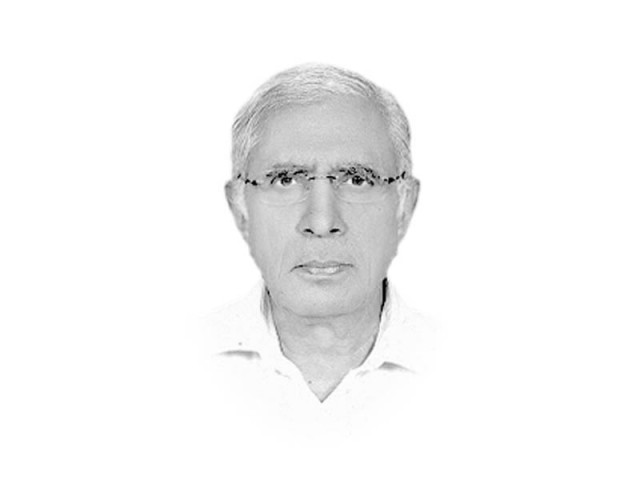Intriguing visit, intriguing results?
Women can be game-changers for Pakistan
The writer served as Executive Editor of The Express Tribune from 2009 to 2014
Seemingly the keynote event during the two-day visit of Ms Christine Lagarde, Managing Director, International Monetary Fund (IMF), to Pakistan was her keynote speech at a seminar on ‘Pakistan and emerging markets in the world economy’ on October 24, 2016. The government had paraded the visit in the media as an endorsement of its economic policies. Ms Lagarde did not sound disagreeing with the perception as she described the current state of world economy as ‘a moment of opportunity’ for Pakistan. But the list of challenges that she expects to come in the way of Pakistan’s attempts to make the most of this moment of opportunity are almost the same the country had been facing even before it went to the Fund for help three years ago: 1) Public debt remains high, at about 19 trillion rupees, or 65 per cent of GDP; 2) The interest bill is larger than Pakistan’s entire development budget; 3) Pakistan today still only collects little more than half of what is estimated as a feasible amount; 4) Currently public enterprises lose amount to more than two thirds of what is spent on the Benazir Income Support Programme; 5) Private investment in Pakistan today accounts for only 10 per cent of the economy. In emerging markets however, the average is about 18 per cent; 6) Pakistan’s exports are about 10 per cent of GDP; emerging markets’ exports are nearly four times as high; 7) Another way to boost growth is by improving the business climate — by strengthening governance and enabling the private sector to thrive; 8) Pakistan ranks 117 out of 168 countries in perceived corruption; 9) It still takes Pakistani companies much too long to figure out their tax forms. That time could be spent much more efficiently on pursuing business opportunities; 10) Simplifying procedures to open new businesses enforce contracts, and pay taxes can go a long way in promoting growth; 11) The energy sector reform needs to be completed; 12) Improving Pakistan’s business environment to the average of, say, the Middle East and North Africa region could increase growth by 1.5 percentage points per year; 13) Currently, education outcomes in Pakistan remain weak. One out of every 12 children in the world that does not attend school lives in Pakistan; 14) Bolstering public investment in education from 2.5 per cent of GDP to emerging market average — around 4 per cent of GDP — will be essential to prepare the workforce with the necessary skills and make Pakistan more competitive on the global market; 15) Beyond education, there is also a need to improve women’s participation in the economy. Closing gender gaps in economic participation could boost GDP by up to a third. These gains are non-trivial. Women can be game-changers for Pakistan.
This is the state of the national economy despite her claim that today, “thanks to the authorities’ homegrown programme of reforms that the IMF supported, the economy is on a much stronger footing. Public finances have improved considerably, external reserve buffers have been rebuilt, and growth has been gradually strengthening. These are very encouraging developments.”
She further claimed: Disruptive power outages have come down — from about nine hours to one hour per day for industries, and from eight to five hours for urban consumers.” Costly and inefficient subsidies were reduced. And the circular debt has also significantly decreased. Revenue collection improved by 2.5 per cent of GDP over the past three years. More than 1.5 million new beneficiaries were added to the Benazir Income Support Programme, and the programme’s cash stipends were raised by more than 50 per cent.
All these claims have already been questioned by eminent independent economists of the country. And what is so new about the challenges Pakistan has been facing for ages? So, this was perhaps not the actual purpose of the visit of the Fund MD to a country which, even those of her officials entrusted to monitor the progress of the three year programme avoided visiting for reviews finding it safer to do the job in UAE.
So, the more one mulls over the reasons for the visit the more one feels that it could have been prompted by a couple of powerful members of the Fund’s Board who in turn could perhaps have needed to send an urgent and strong message to Pakistani ruling elite.
Published in The Express Tribune, October 29th, 2016.
Like Opinion & Editorial on Facebook, follow @ETOpEd on Twitter to receive all updates on all our daily pieces.

















COMMENTS
Comments are moderated and generally will be posted if they are on-topic and not abusive.
For more information, please see our Comments FAQ